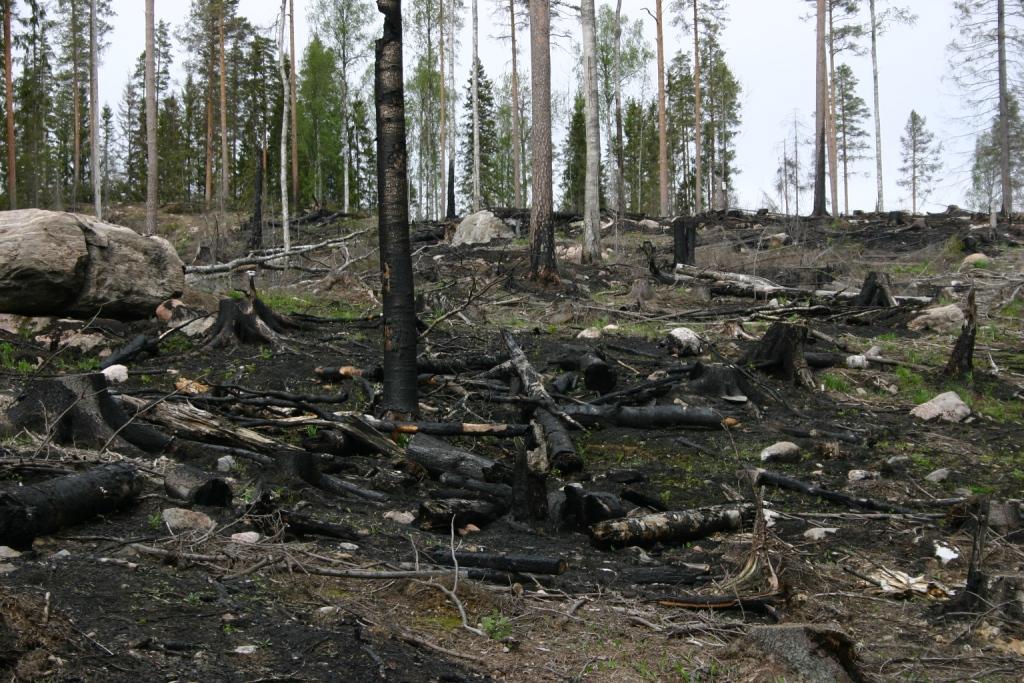
The biggest wildfires in 2018 occurred in Portugal, Sweden, Britain, Italy and Spain. More countries suffered from wildfires than before.
The wildfire situation in Europe looks better this year than it did last year. The harmful effects of forest fires, in particular, are causing more concern than before, especially with a view to mitigating climate change: forests make good carbon storages, but in a wildfire the storage goes up in smoke.
A recently published EU report shows that last year, 176,000 hectares of forest were destroyed by fire in the European Union. Nevertheless, this is only one sixth of the figure for 2017 and below the long-term average.
In Finland the rescue departments had more call-outs to wildfires in 2018 than on average during the three preceding years. Even so, the burnt area only totalled 1,226 hectares.
In Sweden last year was the worst in the EU’s reporting history: the total area affected by wildfires was over 21,605 hectares, which is the second-largest figure in Europe. This was exceptional also in that the most numerous wildfires normally occur in southern Europe.
Finland has improved its preparedness for fires
Wildfires in Europe destroyed 50,000 hectares of conservation sites, including some in the Natura 2000 network. Almost half of this was due to one single fire in Portugal.
Still, the share of burnt hectares of the total conservation area is small. It was only in Portugal that the share was over one percent of the area conserved.
Daniel Calleja Crespo, Director General of the European Commission’s DG Environment, regards the situation as serious. “These catastrophic events wipe out the achievements of decades preserving valuable habitats and species,” Calleja Crespo says in the foreword to the recent report.
No fires on conservation sites were reported in Finland in 2018.
Though the situation as regards wildfires gives no cause for special concern, Finnish authorities have studied the possibility of enhancing their preparedness for forest fires. As a result, the co-operation between the Finnish Forest Centre and regional rescue authorities is now ‘in better shape,’ says Tatu Torniainen, Ministerial Adviser at the Ministry of Agriculture and Forestry.
“For quite some time the Forest Centre has provided map data on forests with the greatest risk of fire for the rescue authorities. The collaboration was piloted some years ago in North Karelia, and it is now getting started in earnest,” says Torniainen.
Torniainen also says that more attention is being paid to keeping the contact data of all the authorities involved as up to date as possible.
Poor forest management is responsible for many fires
Karmenu Vella, Commissioner for Environment in the previous Juncker Commission, stresses the importance of forests in combating climate change. “Like never before, forests are under severe threat,” Vella says in the Commission press release informing of the report.
The EU has improved its preparedness for forest fires in many ways, including the setting up of a transition fleet for firefighting aircraft in the summer of 2019. The Commission would also like to step up EU action on deforestation and forest degradation.
“Weather conditions are not the only cause of wildfires,” says Calleja Crespo and continues that the careless use of fire by ordinary people is often a contributing factor.
According to Calleja Crespo, the unsustainable management of forests coupled with the drought caused by climate change are a destructive combination. “Together they caused the greatest risks of fire in 2018 and continue to do so in 2019,” says Calleja Crespo.
Fires have become more numerous this year – though not in Finland
This year, the forest fire season started early because of drought and high winds and temperatures. This was also the case in Finland.
“The number of call-outs due to wildfires jumped to 514 as early as April, while the previous year’s figure was only 87,” says Rami Ruuska, Senior Officer for Rescue Services at the Finnish Ministry of the Interior.
The number of call-outs as a whole is on a decrease this year, compared to 2018. The number of call-outs related to wildfires in January–November 2018 was 4,183, whereas this year it was 2,899.
The situation is worse in other parts of Europe: by March, the number of forest fires had exceeded the total annual average for the past ten years.
The Annual Report on Forest Fires in Europe, the Middle East and North Africa is drawn up by the EU’s Joint Research Centre.
Commission report: more countries than ever hit by forest fires in 2018
